THE BACKYARD GARDENER
SIMPLE, EASY, AND BEAUTIFUL GARDENING WITH VEGETABLES, HERBS, AND FLOWERS
KELLY ORZEL
LYONS PRESS
Guilford Connecticut
An imprint of Globe Pequot
Distributed by NATIONAL BOOK NETWORK
Copyright 2017 by Kelly Orzel
All photographs by Kelly Orzel
All rights reserved. No part of this book may be reproduced in any form or by any electronic or mechanical means, including information storage and retrieval systems, without written permission from the publisher, except by a reviewer who may quote passages in a review.
British Library Cataloguing in Publication Information Available
Library of Congress Cataloging-in-Publication Data Available
ISBN 978-1-4930-2657-9
ISBN 978-1-4930-2658-6 (e-book)
The author and Lyons Press assume no liability for accidents happening to, or injuries sustained by, readers who engage in the activities described in this book.
 The paper used in this publication meets the minimum requirements of American National Standard for Information SciencesPermanence of Paper for Printed Library Materials, ANSI/NISO Z39.48-1992.
The paper used in this publication meets the minimum requirements of American National Standard for Information SciencesPermanence of Paper for Printed Library Materials, ANSI/NISO Z39.48-1992.
Printed in the United States of America.
TO MY FAMILY
WHOVE GIVEN ME LIFE, LOVE, AND MY WINGS. AND ESPECIALLY TO CJ, MY BEST FRIEND, WHO SHARES THIS INCREDIBLE JOURNEY WITH ME.
CONTENTS
INTRODUCTION
All the important things Ive learned about growing, Ive learned by sinking my hands deep into the dirt. Be adventurous in the kitchen garden, try new varieties, always save room for your staples, and remember that a garden should always evolve.
Gardening isnt all that complicated. Plants are wonderfully resistant. If somethings not thriving, dig it up and grow it somewhere else, or try another crop. Im not ashamed of my gardening mistakesor as I call them, experimentsand you shouldnt be either. Many times these were the moments in which I learned the most.
I laid out this book the same way I garden. The first couple of chapters cover the basics: soils, tools, what plants need to thrive, and how to propagate them. The middle is the heart of the book in which I discuss my favorite organic growing techniques and organize the vegetable, herb, and flower sections based on how they should be planted in the garden. Unlike most gardening books, I divided the plants into groups based on their familial relationships and cultural needs, grown together in a specific sequence. With this book, youll learn how to enhance your garden by making it work for younot the other way around. And finally, Ive included a monthly garden chore guide to give you a seasonal blueprint. When I started my kitchen garden, I wished Id had a roadmap tell me what to do and when to do it. Your schedule can always be tweaked and altered, but having a place to start is invaluable.
This is not simply a garden reference book. Ive combined facts with personal experiences, anecdotes, and time-honored tradition to be your guide. My hope is that The Backyard Gardener inspires you to become a more successful gardener. So go out and get your hands dirty! Happy gardening!
CHAPTER 1
GARDENING FROM THE GROUND UP
Once youve decided to start a garden, its tempting to grab the biggest shovel you can find and rip up the entire yard. While I experience the same urge every spring, there are a few things you need to consider before you start, such as the type of soil you have, light conditions, how to design your garden, and how to keep it alive. No matter how exciting digging new beds can be (and it is), you dont want to run amok, because if you dont plan in the beginning, you will be less than impressed when it comes time to harvest.
THE NITTY-GRITTY: YOUR SOIL
Its important to have a clean start (sort of). Healthy soil is the most important part of gardening. It costs much less to do it right the first time than if you cheap out and buy bargain brand soil. Not only will you wind up with unremarkableeven poorproduce, youll only have to spend more money and resources in the long run.
I think of my soil as a living thingsomething to be nurtured, fed, and cared for. Lots of microorganisms play various roles in developing your soils structure, aerating it, and mobilizing nutrients. Therefore, you need to know whats going on under your feet before you can plant.
Not all soils are created equal. Loam is the gardeners best friend: it contains the perfect balance of sand, silt, and clay particles, along with organic matter. This translates into good drainage, as well as nutrient and water retention, which creates the ideal environment for most plants. Other soil types like clay, sand, silt, and chalk are more difficult and often require more attention to keep your garden healthy. Clay soil is the most fertile since its wet, sticky structure holds nutrients and water tightly. Unfortunately, clay leaves little room for air and water movement, which can lead to root rot. In addition, clay also reacts to temperature extremes: cold, wet soil in cool weatherand hard, dry soil in warm weather. Sand is the opposite of clay. It drains wella little too welland readily loses moisture and nutrients. Cacti and succulents thrive in sandy, often acidic, soils, but most other plants will suffer from the lack of water and nutrients. The main benefit to sandy soil is that it warms more quickly in the spring, which is good for germination. Silt falls somewhere between clay and sand, producing light, moist soil that drains well, but also compacts easily. Chalky soil is often shallow, overlays rock, and is more alkaline due to its high lime and calcium carbonate content. The classic ball test will help you figure out what type of soil youre working with. If you grab a handful of soil and it falls apart the minute you release, you have sandy soil. If it stays compact in a ball, you have clay soil, and if its more crumbly, you have desirable loam.

It only takes soil, seeds, and time for your kitchen garden to go from nada to knockout in a single season!
THINK OF YOUR SOIL AS A LIVING THING.
There are some things you can do to improve your soil structure. Adding leaf mold, decomposed manure, and compost to sandy soils will prevent them from draining too much. Conversely, incorporating ample amounts of bulky organic matter or gravel to clay will improve drainage. Unfortunately, you dont have a lot of options when it comes to chalky soils. My advice: embrace what you have and grow arid, alkaline-loving plants.

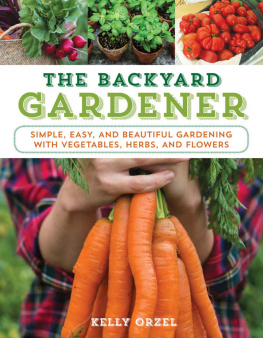

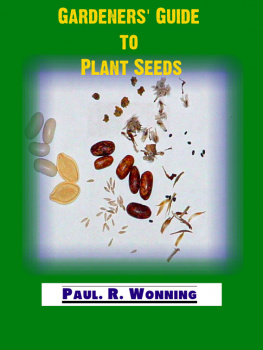

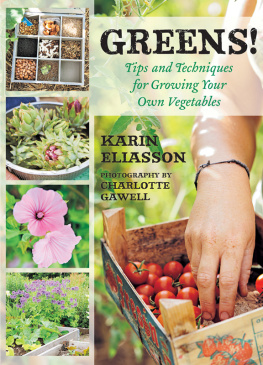
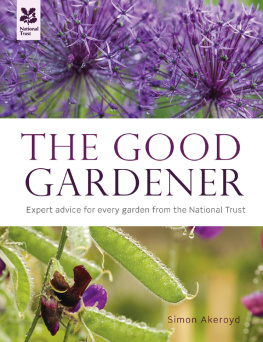
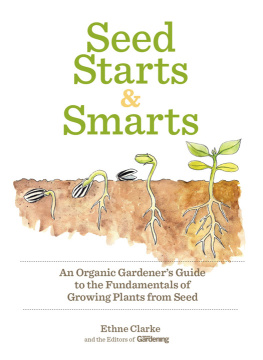
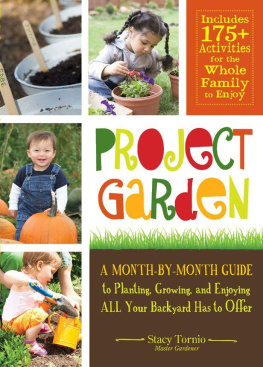



 The paper used in this publication meets the minimum requirements of American National Standard for Information SciencesPermanence of Paper for Printed Library Materials, ANSI/NISO Z39.48-1992.
The paper used in this publication meets the minimum requirements of American National Standard for Information SciencesPermanence of Paper for Printed Library Materials, ANSI/NISO Z39.48-1992.


